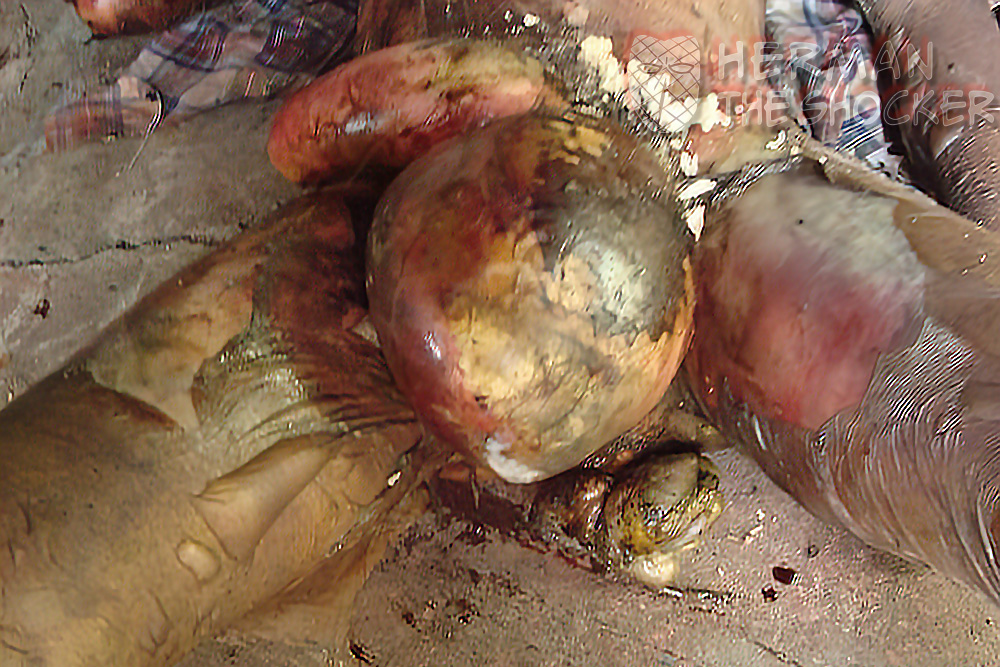There are five stages of decomposition, namely fresh, bloated, active decay, advanced decay, and skeletal stage. These stages may occur simultaneously in different parts of the same corpse, and it may be difficult for a forensic pathologist to label the state of the corpse with a single stage.
The earliest external sign of putrefaction is the greenish discoloration of the skin of the anterior abdominal wall in the right iliac fossa region. In this region of the abdomen, the caecum, loaded with semi-solid intestinal content and commensal gut bacteria, lies quite superficial. This greenish discoloration of the skin results from the formation of sulfhemoglobin facilitated by the commensal intestinal bacteria that invade the tissues after death. This skin discoloration in the right iliac fossa region appears about 18 hours after death. In temperate climates, this greening may first appear 2 to 3 days after death. The ambient temperature affects the speed of onset of putrefaction and its rate of progression.
In the bloated stage, body parts, including organs and soft tissues, swell due to the accumulation of putrefactive gases or other decompositional products from the putrefaction process. It usually starts in the abdomen and then slowly affects other parts, including the face, breasts, and genitals. Also, during this stage, skin changes occur, such as blisters and slippage. Skin slippage at the extremities is known as degloving. Moreover, the phenomenon of marbling is also present during this stage, where blood vessels are visible on the skin as greenish-black streaks and eventually results in skin discoloration ranging from green to black. These postmortem changes are apparent in about 24 to 48 hours after death.
Latest posts











